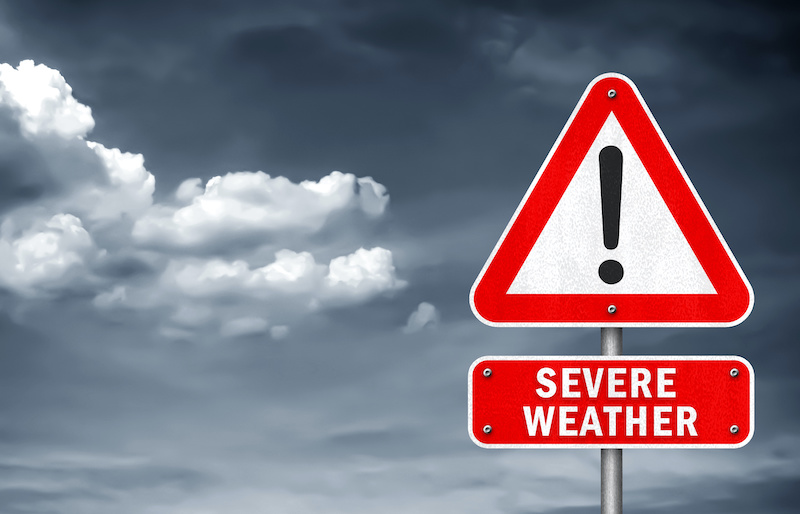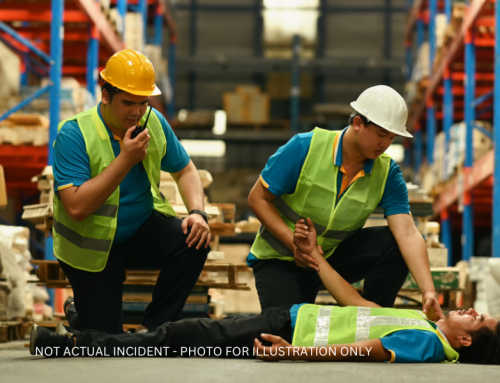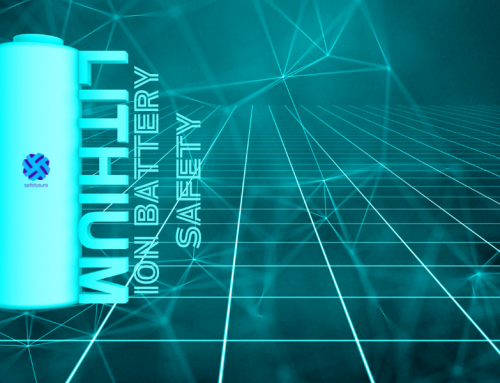Events across eastern states of Australia during 2019 and 2020 have demonstrated the need to plan for severe weather events, specifically fires, storms. floods, and heatwaves. While we recognise that we cant control the weather, there are a range of things businesses should do in preparing for disasters and emergencies that will assist in satisfying work health & safety obligations. In this article we examine what your business can and should do to prepare a severe weather safety plan.
This year, some of these severe weather events directly and indirectly impacted our customers operations, demonstrating a requirement for businesses to plan for, and where necessary, conduct seasonal risk assessments to consider the type and likelihood of events that may affect their business operation.
With the current outlook for mainland Australia indicating above average rainfall and temperatures, the wide-ranging impacts of severe weather events should be considered in providing a safe workplace. Here some of our guidance for preparing for severe weather events.
Outlook for future months
The Bureau of Meteorology, on 26 November 2020, forecasted the following:
- December 2020 to February 2021 rainfall is likely to be above average across most of Australia, except west coast Tasmania.
- Average day time temperatures during December 2020 to February 2021 are likely to be above the long-term average across parts of Southeast and Far West Australia, as well as along the northern coastline.
- Average night-time temperatures during December2020 to February2021 are very likely to be above the long-term average across almost all of Australia.
- LaNiña is underway in the tropical Pacific. LaNiña typically increases the likelihood of above average rainfall across eastern Australia during summer.
Refer to the Bureau of Meteorology’s website for additional information on the climate outlook overview.
Risks of severe weather events
Severe weather can present a wide range of risks that need to be considered by a person conducting a business or undertaking (PCBU). In summer, these events are typically dominated by elements of:
- extreme heat
- strong wind
- storms or protracted heavy rainfall.
These situations can lead to other emergencies such as bushfire or flooding and may present other issues at a workplace such as protracted loss of power or access issues.
While not an exhaustive list, some key risks to consider are:
- loss of access to your site
- loss of communication systems
- instability of soils particularly poorly constructed retaining walls
- trees been blown over or branches falling into work or public access areas
- portable infrastructure and buildings being blown over or moved
- fire related damage or injuries
- loss of power to critical systems
- lightning strike damage and related fires
- wind dislodging items causing damage or injuries
- submersion of fixed and mobile plant
- hazardous chemical reactions due to heat or water exposure
- loss of control of vehicles caused by slippery conditions
- working in or around water and mud
- recovery operations needed to re-establish power, communications and access
- building roof collapse due to hail build-up
- burning embers starting fires.
How to prepare for severe weather in your business
Firstly you must prepare before the event. The time to prepare for severe weather is now. Establishing resilient infrastructure, developing plans, establishing contingencies and training your work force is generally not possible during a severe weather event.
Emergency Planning
A key component of emergency planning is identifying the likely events and situations that may occur in order to determine what an adequate level of site preparation and response capability needs to be. The effects of severe weather can be wide-ranging.
It is critical that emergency risks are identified, and adequate controls established, particularly those related to principal hazards at the mine or petroleum site. It is essential that mines and petroleum sites develop an adequate level of response capability based on the risks identified, including first aid, firefighting and rescue arrangements. Due to the nature of severe weather events, it likely that the event may not be isolated to the mine or petroleum site.
Depending on the nature of the severe weather event, emergency services may also be involved in responding and it is important that the arrangements at your site are interoperable with the emergency services.
Certain incidents must be immediately notified to emergency services, and the attending emergency services may exercise powers to enter and control the event at your work site.
Adjusting to changing conditions at your workplace
With some risks changing due to environmental conditions, a seasonal risk assessment may help identify potential issues, based on long-range weather predictions and forecast outlooks, in conjunction with remaining informed about localised events and real-time updates. In any case, mines need to consider the impact of severe weather in order to prepare.
For example, during a period of extreme heat, changes to planned work or methods may be required to ensure workers are not adversely affected by the environmental conditions that could result in heat stress. That may include modified tasks, additional worker rotations and providing additional rest and re-hydration opportunities.
Enter the danger zone – work safety in the silly season
According to regulators in Australia, extreme heatwaves are estimated to cause more deaths in Australia than all other natural hazards combined.
Outdoor workers are among those identified as most vulnerable to the effects of heat, a particular consideration for persons who conducted business on construction sites or outdoors. Such heat events often correspond with periods of extreme fire danger, another compounding factor to be considered for businesses who operate in proximity to national parks and reserves.
Severe weather can have different effects and require specific planning for different parts of the workplace. Special provisions are generally required for remote or isolated work that is conducted.
This includes maintaining an effective method of communication with workers. Workers engaged in remote or isolated work must be contactable and be located during emergencies, including receiving warning of impending events.
Warning systems and action plans for emergencies
Communicating the risks associated with severe weather is essential. Informative communication prior to and during severe weather should take place, in conjunction with emergency warnings where imminent or actual hazards are present.
Workers must be made aware of their required actions, including where to seek shelter in a place of safety if required.
Response Plans can workplaces to develop graduated approaches to various severe weather scenarios and can be developed for specific parts of the business depending on the required actions.
Recommendations for managing severe weather risks and subsequent emergencies
Work health and safety legislation across Australia requires that persons in control of business units, contractors and other persons conducting a business to conduct risk assessments to identify potential emergency situations caused by severe weather and natural disasters. This means having a severe weather safety plan is important.
Businesses should ensure that they have adequately assessed the risks associated with severe weather events and have suitable and sufficient, safety management, emergency response and recovery plans in place.
As severe weather is often infrequent and localised, it is important that everyone at a work site, including contractors and visitors, are made aware of the site’s emergency plan, emergency response and rescue systems.
If you or your business needs help for establishing a site emergency plan or a severe weather safety plan, Safetysure work safety consultants can help. Call us on 1300 087 888 or chat below.
Read more of the latest news and work safety information from Safetysure







Leave A Comment